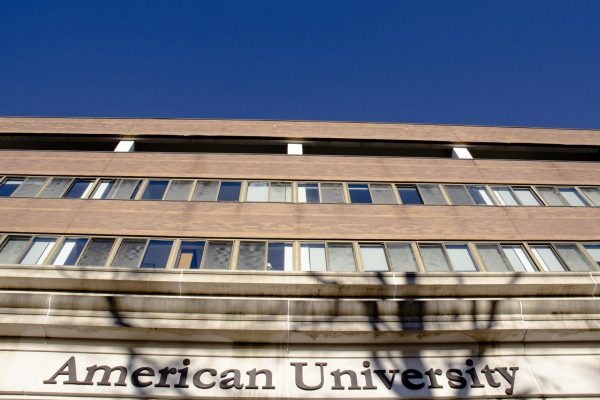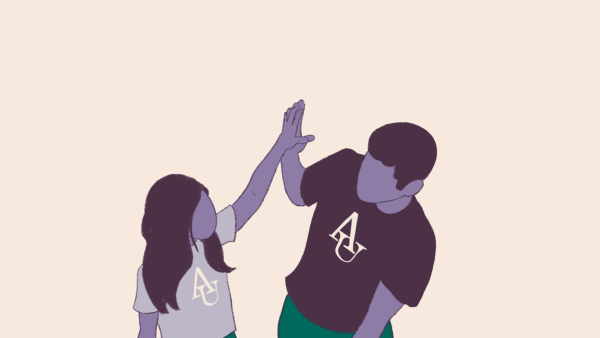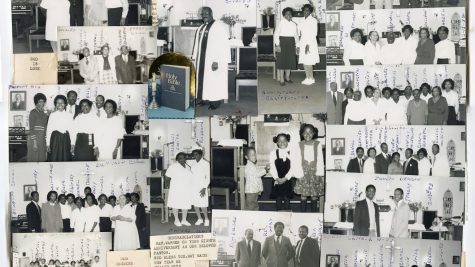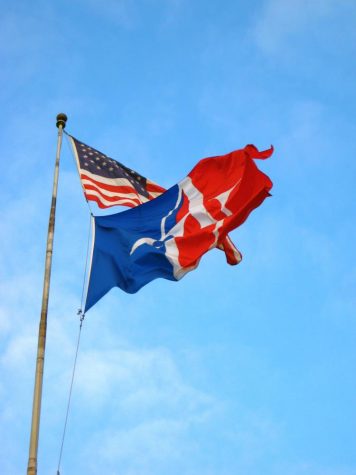Intern Haven or Dead End?: Assessing the Internship Options at AU
Students eager to become the next Hilltern flocked to the American University Job and Internship Fair last Wednesday, where over 150 organizations, including 80 nonprofit organizations, 24 government agencies and employers from the Associated Press, The White House and POLITICO were present to recruit and hire. One hundred and nine of those organizations offered internships.
American University boasts about its high student internship rate, with statistics plastered all over faceless torsos on shuttle busses, palm cards and web advertisements. According to the Career Center website, 87 percent of undergraduate students at American University have one or more internships before they graduate.
In 2014, 96 percent of undergraduates in the School of Communications had an “internship or experiential learning activity” (i.e. University College labs), 93 percent for the College of Arts and Sciences, 97 percent for the School of Public Affairs and 97 percent for the School of International Service.
These impressive stats bring forth the question: Is AU really helpful in connecting students to internships?
It is unknown how many of those internships were found through American University, which offers a wide variety of resources for students to find internships, including a database called CareerWeb, the Career Center, jobs and internships fairs, academic advisors/counselors, faculty and staff and personal networks within the university.
Out of 48 AU students surveyed through multiple Facebook groups, (11 of the respondents were students in SOC, 10 in SIS, 5 in Kogod, 15 in SPA and 7 in CAS) the average number of internships held during their time at AU was 2.5. Twenty out of 48 of the respondents said that none of their internships were found through AU and 19 out of the 48 respondents said that one of their internships came through AU. Fifteen of the respondents were sophomores, 11 were juniors and 22 were seniors. While these results aren’t indicative of the entire AU student body, it certainly makes one wonder if the high internship rates are simply a marketing strategy.
Grace Ries, a junior in SOC for Broadcast Journalism accrued multiple internships through her professor, her first during her second week of classes in freshman year.
Her first internship was informal, but involved video editing a series of archeological digs done by George Washington University students in Kenya to discover how populations dealt with climate change millions of years ago. The editing was all done on campus for Planet Forward, a division of National Geographic.
“I got that big name recognition on my resume without having to leave campus at all which was really nice.” Ries said.
Her first internship enabled her to land the role of intern-mentor at Ryan Seacrest Studios for the Cincinnati Children’s Hospital. Although she didn’t get that internship through AU, she believes that her previous internship experiences that she found through AU allowed her to get that position.
Working at Ryan Seacrest Studios consisted of hosting daily live shows for children living in the hospital. The internship was unpaid because it was for a philanthropic organization.
“I was okay with that because it wasn’t like I was donating my time to an organization whose goal was to be for-profit,” Reis said. “But I think in the future I’m definitely going to have to have an internship that has money associated with it.”
That first internship also helped her secure another internship at an Emmy winning production studio in Bethesda called Pixeldust Studios.
Although Ries did not receive credit for any of her internships, she did not find for-credit internships as worth her time. “If it’s an unpaid internship and [I] want to get credit for it, I’d be forking up fifteen hundred dollars to have an internship,” Ries said.
According to the Career Center website, sophomores, juniors, and seniors must have a minimum GPA of 2, and the internship must be at least 85 percent substantive to earn credit. Substantive work counts as research and writing, while administrative work counts as clerical, according to Brian Rowe, the Director of Experiential Education in the Career Center.
“We don’t want an intern to go in and get coffee for people” Rowe said. “We want [interns] to develop professional level skills and be exposed to professional level skills that employers will want after [they] graduate.”
According to the Facebook survey, 23 out of 47 of respondents said that they took an internship for credit while 22 out of 47 of the respondents said that they did not.
These numbers could be due to the fact that SOC, Kogod, SIS, and SPA all have different requirements for students if they want to get an internship for credit. CAS has different requirements depending on the major.
Rowe believes the requirements exist because each school has different philosophies on the academic levels students have to reach to get a for-credit internship.
The Career Center is where AU students go to get their resume updated, look for internships and jobs and get advice, among other services. According to Brian Rowe, the Career Center “serves as a ‘nexus point’ between employers and students.”
The internship search process is different depending on whether the student is getting one for credit. If a student is acquiring an internship for credit, the process starts with an academic advisor because some academic programs have prerequisites.
If a student wants an internship for professional experience they can access the CareerWeb database, which has thousands of internship postings. In the last academic year there were over 6,000 postings and were still multiple openings. The CareerWeb is the Career Center’s primary resource.
“The employers …are listing [that] they’re consciously coming to AU and saying ‘I want an AU student,’” Rowe said.
He also said that students usually get internships through personal networks such as other students, faculty and academic staff. “What the Career Center wants to do with all students is teach them how to find internships,” Rowe said.
AU students find internships through networking because a vast majority of full time internships and regular jobs are not posted anywhere. Each year there is a networking event with all the schools except Kogod, which has its own Career Center.
“We facilitate these interactions with networks that we’ve built up on the students’ behalf, and of course keeping the alumni connected to the university.” Rowe said.
According to the survey, 11 out of 48 of the respondents said the Career Center helped them find their internship and nine out of 48 said the Career Web helped.
Ries did use the CareerWeb to get her internship, but found that her connections through her professor and the environment of AU in general helped her to get her internships.
“AU does a pretty good job with their journalism majors to [help] them to get practical skills” Ries said. However, Reis sees journalism majors as the exception.
Ries also felt that the internships helped her become more competitive in the market.
“I’ve had people tell me as I’ve been applying for other internships and other jobs going forward for next semester that I got put to the top of the pile because I had so much [on my resume]” she said.
Her advice to students is to look for places to intern that have recognizable names and finds that doing little work at a well known organization is better than doing great things at a place that doesn’t have connections.
“Because you’re in DC, that’s what’s gonna help you afterwards is to have something that people will actually know of” Ries said.
Although Ries got her first internship as a freshman, the Career Center doesn’t advocate freshmen getting internships because it’s hard to apply alongside juniors and seniors and they want them to build up their resume first. They find that it’s better if the students gain leadership positions in organizations, clubs or volunteerism.
“We really want a student when they come to AU to feel part of the university, to get centered, to get grounded, to use this as a foundation.” Rowe said.
While students like Ries had positive experiences from internships they acquired through either personal networks or services at AU, other students such as the survey respondents, ventured out independently and found internships for themselves without the help of the university. The satisfaction levels with AU and the Career Center in helping students find internship seems to be mixed. Perhaps it is the driven culture of DC that motivates students to get experience in their chosen career paths earlier, more than the resources that AU offers.












